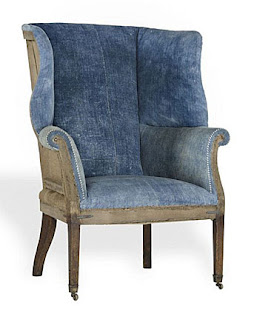 QUESTION: I bought these little white match holders from an antiques dealer in northern France, just across from Dover, England, so it’s quite possible they’re English. I’d like to find out their origin and date if possible. I have a collection of match holders but have never seen any like these before.
QUESTION: I bought these little white match holders from an antiques dealer in northern France, just across from Dover, England, so it’s quite possible they’re English. I’d like to find out their origin and date if possible. I have a collection of match holders but have never seen any like these before.
ANSWER: These match holders are quite unique and seem to be made of Parian, a type of biscuit porcelain imitating marble that was made in England and the United States in the 19th century. Designed to imitate carved marble, it had the advantage that it could be prepared in a liquid form and cast in a mold, enabling mass production.
 Parian became popular with middle and upper middle class Victorian women who desired to own the marble statuary and china of the upper classes but couldn’t afford them. Parian filled this need at an affordable price. And while people normally associate Parian with grander sculptural forms and statues and items like water pitchers here in the U.S., it seems that as it’s popularity began to wane that some companies began making smaller less expensive items such as match holders.
Parian became popular with middle and upper middle class Victorian women who desired to own the marble statuary and china of the upper classes but couldn’t afford them. Parian filled this need at an affordable price. And while people normally associate Parian with grander sculptural forms and statues and items like water pitchers here in the U.S., it seems that as it’s popularity began to wane that some companies began making smaller less expensive items such as match holders.
Because Parian had a higher proportion of feldspar than porcelain, makers fired it at a lower temperature. The increased amount of feldspar caused the finished body to be more highly vitrified, thus possessing an ivory color and having a marble-like texture that’s smoother than that of biscuit, or unglazed, porcelain. In its Victorian heyday, potteries produced hundreds of thousands of pieces of Parian ware annually.
 Though the Great London Exhibition of 1851 gave Thomas Battam credit for inventing Parian, indicating that he succeeded in producing a very perfect imitation of marble, there seemed to be controversy about who actually invented it. While Battam may have invented it, several English factories claimed credit for its development. But the Staffordshire firm operated by William Taylor Copeland and Thomas Garrett was the first to produce and sell it in 1842, and went on to become one of its major manufacturers.
Though the Great London Exhibition of 1851 gave Thomas Battam credit for inventing Parian, indicating that he succeeded in producing a very perfect imitation of marble, there seemed to be controversy about who actually invented it. While Battam may have invented it, several English factories claimed credit for its development. But the Staffordshire firm operated by William Taylor Copeland and Thomas Garrett was the first to produce and sell it in 1842, and went on to become one of its major manufacturers.
Several potteries marketed it under different names. The Copeland firm called it "statuary porcelain" because of its resemblance to the fine white marble of neoclassical sculpture. Wedgwood named it "Carrara," after the Italian quarry patronized by Michelangelo. But it was Minton which coined the word "Parian" to suggest Paros, the Greek isle that furnished much of the stone used in the classical period. Thus, it quickly became the medium's generic name.
Ultimately, potteries produced two varieties of Parian ware—Statuary Parian, used in the making of figures and reproductions of sculpture, and Standard Parian, from which they made hollowware.
 Standard Parian, with a greater proportion of feldspar in the composition but no frit, was hard porcelain. The presence of iron in the feldspar without iron silicate caused early Parian statuary to appear ivory tinted. Both English and American potters either obtained details of the original formula or worked out their own, resulting in enormous production of Parian wares on both sides of the Atlantic. Plus the invention in 1844 of a patented machine that allowed scaled reproductions of larger bronze or marble originals made replicas of figures and busts by noted sculptors widely available.
Standard Parian, with a greater proportion of feldspar in the composition but no frit, was hard porcelain. The presence of iron in the feldspar without iron silicate caused early Parian statuary to appear ivory tinted. Both English and American potters either obtained details of the original formula or worked out their own, resulting in enormous production of Parian wares on both sides of the Atlantic. Plus the invention in 1844 of a patented machine that allowed scaled reproductions of larger bronze or marble originals made replicas of figures and busts by noted sculptors widely available.
Though Minton produced several small Parian statues of dogs, it seems far more likely that Copeland-Spode produced these dog match holders since they produced a wider array of Parian ware, including match holders. They probably date from the 1890s. As time went on, Parian ware went from a less expensive substitute for marble in statuary to the material for inexpensive knickknacks.
To read more articles on antiques, please visit the Antiques Articles section of my Web site. And to stay up to the minute on antiques and collectibles, please join the over 30,000 readers by following my free online magazine, #TheAntiquesAlmanac. Learn more about "The Ancients" in the 2021 Spring Edition, online now. And to read daily posts about unique objects from the past and their histories, like the #Antiques and More Collection on Facebook.







































